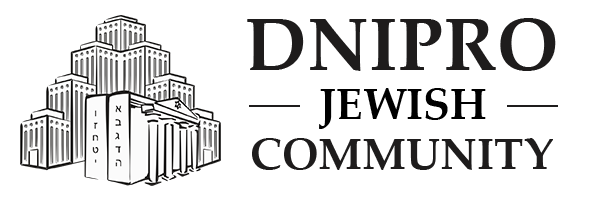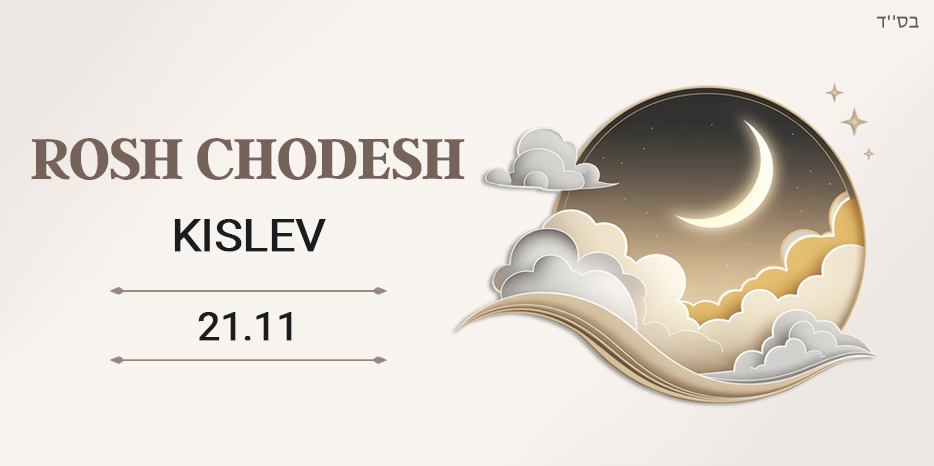The Torah compares the month of Kislev to the month of Sivan: Sivan, the month of the giving of the Torah, is the third month after Nissan, the month of liberation from Egyptian slavery, while Kislev is the third month after Tishrei, which includes Rosh Hashanah.
There is a distinction between serving the Almighty in the month of Nissan and serving in the month of Sivan.
The month of Nissan alludes to the service of the tzaddikim (righteous ones), since the exodus from Egypt was likened to giyur (conversion to Judaism), and according to the Talmud, “a convert who has converted” is likened to a sinless infant. Third after Nissan comes Sivan, the month of the giving of the Torah. In contrast, Tishrei alludes to the service of baalei teshuva (repentant ones), since it was on the tenth of Tishrei (Yom Kippur) that the Almighty finally forgave the Jews after their sin of the Golden Calf. The third month following Tishrei is Kislev. This month marked the revelation of the Inner Torah—the teachings of Hasidism, which began with particular force after the Alter Rebbe’s release from exile.
Teshuva (repentance) is, as is well known, an even higher spiritual aspect than Torah. For with the help of teshuva, errors and shortcomings committed in Torah study and observance of the laws set forth therein can be corrected. On the other hand, it is the Torah that is the source of teshuva—return to the Almighty.
The same applies to the Inner Torah. The source of its revelation was the giving of the Torah, which took place in Sivan. Including everything contained in the Inner Torah, it was conveyed to the Jews at Sinai. However, during the giving of the Torah at Sivan, the Inner Torah was hidden from the Jews, and its revelation occurred in the month of Kislev—the third month after Tishrei, the month associated with the service of teshuvah (repentance) (see above). The revelation of the Inner Torah and the dissemination of its sources to the outside world are preparation for the revelation of the Messiah.
Since the month of Kislev represents the time of the revelation of new knowledge hidden in the Torah—the Inner Torah—it also contains the moment of the revelation of something new in the world—a miracle.
The Torah of Hasidism explains the concept of miracle in detail. The natural existence of the world—existence according to the laws of nature—is also a miracle. However, since this state of affairs is familiar to us, the miracle is not noticeable in it. And the fact that we fail to notice the miraculous nature of the natural processes occurring in the world could lead us, God forbid, to the assertion that this world has no Ruler. However, when something beyond the ordinary—a miracle—occurs, additional revelation is generated.
For this reason, the month of Kislev is a month of miracles: since it contains the revelation of something new in the Torah, which is the “blueprint” for the creation of the world (i.e., there is a direct connection between the Torah and the world’s existence), the revelation that occurs in the Torah is reflected in the behavior of the world—in new revelations, in the fact that the month of Kislev is a “time of miracles.” The essence of Hanukkah is the eternal power of light over darkness, good over evil.
For this reason, the miracle of Hanukkah occurred in Kislev—the miracle of the jug of oil, hinting at secrets of secrets, the revelation of the highest principle. The candles of Hanukkah are on a higher level than even the candles of the Temple, since, unlike the lamps of the Temple, the candles of Hanukkah will last forever.
The name Kislev, apparently derived from the word “kislo” (“faith,” “trust”), appears in the Book of Job (8:14). Kabbalah teachers speak of two forms of faith and trust: passive and active. They associate the month of Kislev, the time of Hanukkah, with both active, proactive faith, with trust expressed in action, and passive, tranquil faith, likened to pre-dawn sleep.
It is commonly said that Kislev is poor in holidays: only Hanukkah is celebrated there, and even this celebration is “shared” with Tevet.
In honor of the miracle that occurred in the month of Kislev—connected with the spread of the Torah of Hasidism—we celebrate the release of Rabbi Shneur Zalman of Liadi, the founder of Chabad Hasidism, who was imprisoned on false charges by the Tsarist regime.
Two centuries ago, following denunciations from opponents of Hasidism, the Alter Rebbe was imprisoned. Accused of treason, he was placed in a solitary confinement cell in the Peter and Paul Fortress. Times were tough, and there was little hope for the Tsar’s favor. On the nineteenth of Kislev, as the Rebbe was reading the Book of Psalms and reached the verse, “He redeemed my soul in battle with peace…,” the cell doors opened, and, fully exonerated, the Rebbe walked free.
He perceived this event not only as a personal deliverance but also as a sign from Above, announcing that the Almighty desired the further dissemination of the new teaching, the revelation of the Hidden Torah to His people.
“The deeds of the fathers are a sign to the children,” says the Midrash. Every Jewish holiday contains not only historical memory but also a timely sign of the times. “These are days for remembrance and action,” says the Book of Esther. For us, every holiday is not only a memory, but also an active return to something once perfect. A return that translates into present-day, relevant action. That’s why in Hebrew we don’t say “celebrate” a holiday, but “do” it. What action does the month of Kislev obligate us to? To study what was “released” and bestowed upon people on this day. It’s high time to become familiar with Hasidism… Today, there are numerous printed sources of such knowledge in Russian, as well as online resources.
Incidentally, a hint of the overlap between the “poor” holidays of Kislev and the giving of the Torah can be found in such an unexpected source as the Shulchan Aruch: Rabbi Yosef Karo notes that the first day of Hanukkah falls on the same day of the week as Shavuot the previous year.
And a humorous commentary (ignoring the laws of grammar) divides the word “kislev” into two: “kis” (pocket) and “lev” (heart). Whether the heart rules the pocket or the pocket rules the heart—that’s the touchstone of faith hidden in the word “Kislev.” For many, the month of Kislev symbolizes the winter holiday spirit, in anticipation of the Hanukkah lights and cozy family gatherings with donuts and latkes.
The cold, gusty wind next to the warm, bright Hanukkah candles represents light amidst darkness and revelation amidst concealment—a powerful force indeed!
This is the inspiration of Hanukkah, but Hanukkah begins only at the very end of the month, on the 25th of Kislev. Does Kislev have its own message? Is there more to this special month than just a holiday?
According to the Sefer Yetzirah, an ancient Kabbalistic text, each Jewish month has a letter, limb, feeling, zodiac, tribe, color, and body part that are uniquely associated with that month.
The word “Kislev” contains the letter “samekh.” In the Amidah prayer, which we recite daily, we praise God as “someikh noflim”—”He who upholds the fallen.” In many verses of the Psalms, the word “someikh” means support, and our letter “samekh” has the same root as “someikh.” For clarity, the word “kislev” comes from the word “kesel,” which can mean “trust.” Support and trust go hand in hand, and it is these words that shape the meaning of this month.
In the Hebrew alphabet, “aleph-bet,” the letter nun appears directly before the letter samekh. There are no mistakes, coincidences, or accidents here. Our sages teach that the letter nun symbolizes “bar nofli”—”the fallen.” The letter samekh stands next to it, capable of upholding the fallen.
Clearly, the concept of support is closely connected to Kislev.
We can tap into this power this month. The month of Kislev is the first true month of winter. For those of us who live in cold climates, the snow has already fallen, and the heat becomes unbearable. The winter months become more isolated as people rush from place to place to escape the cold.
With faith in G-d, the Jewish people triumphed over the Syrian Greeks in the story of Hanukkah, and it was with the support of G-d and their brothers that they were able to achieve what they needed.
It is with faith in G-d that we navigate the dark, cold months of winter, and it is with the support of G-d and our brothers that we celebrate this month—gathering together and continuing to celebrate life.
Our strength this month is to rely on trust and support. And it’s not easy! As independent beings, many of us strive for complete self-sufficiency. Even turning to G-d for help can feel frightening and vulnerable; stepping into the unknown can be downright terrifying. But Kislev whispers to us, “It’s okay. We can do it.” Finally, the shape of our samech is a circle, an endless embrace, and this personifies G-d’s embrace. G-d holds us, sustains us, and leaves us with only one task—to trust Him.
Using materials from Chabad.org, based on the works of the Lubavitcher Rebbe, “Samekh, the Fifteenth Letter of Nun,” “The Fourteenth Letter,” “The Month of Kislev According to the Book of Creation (Sefer Yetzirah),” as well as articles by Rabbi Alexander Feigin.




